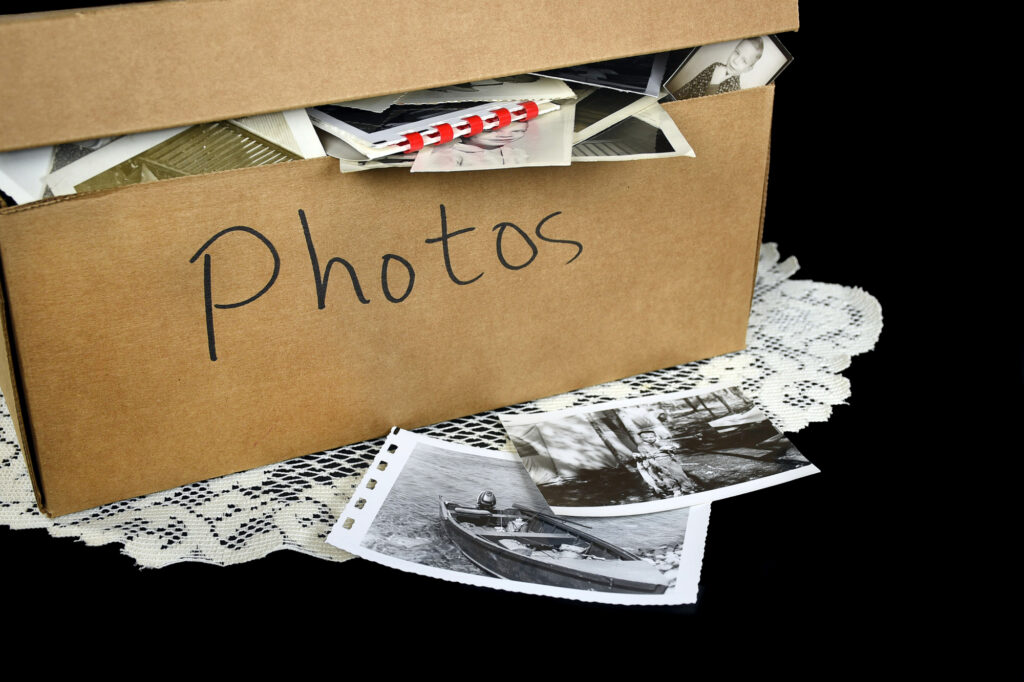Photographs are a treasured asset for most families. They are a recorded history of life’s precious moments and key milestones…they are a historical record of several generations of family and friends whose memories may otherwise fade away into oblivion. Like a classic novel, there is a joy to holding photos in hand and reminiscing about the events surrounding that particular vignette.
More and more as photo histories move online, the boxes of forgotten photographs degrade over time. Physical photos have a shelf like if not properly preserved.
Here are some practical and easy ways to preserve these invaluable family assets
Preserving photographs from damage and wear involves several steps to ensure their longevity. Here are some effective methods:
1. Handling with Care
- Clean Hands: Always handle photographs with clean, dry hands or wear white cotton gloves to avoid oils and dirt.
- Hold by Edges: Hold photographs by their edges to prevent fingerprints and smudges.
2. Storage Conditions
- Climate Control: Store photographs in a cool, dry place. Ideal conditions are around 65-70°F (18-21°C) and 30-50% relative humidity.
- Avoid Light: Keep photographs out of direct sunlight and intense artificial light to prevent fading.
- Air Quality: Avoid storing photographs in areas with pollutants or high dust levels.
3. Proper Storage Materials
- Archival Quality: Use archival-quality materials that are acid-free and lignin-free. Look for photo-safe labels.
- Protective Sleeves: Store photographs in plastic sleeves made from polyester, polypropylene, or polyethylene. Avoid PVC as it can emit harmful chemicals over time.
- Photo Albums: Use albums with acid-free pages and avoid magnetic albums or those with adhesive backings.
- Boxes: Store photographs in archival-quality boxes. Consider using interleaving sheets between photos to prevent sticking.
4. Displaying Photographs
- UV Protection: Use UV-filtering glass or acrylic when framing photographs to protect them from light damage.
- Avoid Adhesives: Use photo corners or other non-adhesive methods to mount photos. Avoid tape, glue, or any sticky substances directly on photos.
- Controlled Environment: Display in areas with stable temperature and humidity, avoiding areas like attics, basements, and bathrooms.
5. Digitization
- Scanning: Digitize your photographs by scanning them at high resolution. This provides a digital backup and reduces the need for frequent handling of the originals. Using scanners and software tools such as PictureStudio by AMBIR can ensure your photos are digitally preserved forever.
- Digital Storage: Store digital copies in multiple locations, such as external hard drives and cloud storage, to ensure redundancy.
6. Restoration and Repair
- Professional Help: For damaged photographs, seek professional restoration services instead of attempting DIY repairs, which might cause more harm.
By following these guidelines, you can significantly extend the life of your photographs and preserve your precious memories for future generations.
Introducing PictureStudio by AMBIR™
For over 25 years, AMBIR, a Chicago-based manufacturer, has been renowned for its high-quality business scanning and digital capture equipment. From document and ID scanners to insurance and business card scanners, AMBIR’s products are trusted across industries like healthcare and financial services.
Now, AMBIR brings its expertise directly to consumers with PictureStudio. Designed to revolutionize photo scanning, PictureStudio combines affordable, high-quality hardware with state-of-the-art AI software. Enhance, organize, and share your most precious memories effortlessly with PictureStudio by AMBIR.






